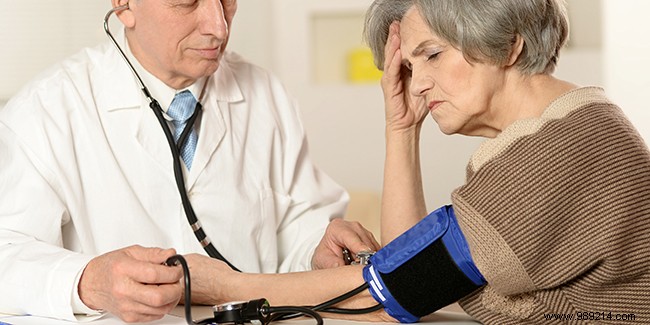Blood pressure, also called blood pressure, is the name given to the force exerted by the blood on the arteries. We speak of arterial hypotension when the blood pressure is too low and of arterial hypertension when the blood pressure is too high. Either way, you have to be worried. Today, we offer you a complete file on hypotension. Whether occasional or persistent, it can be a sign of neurological disorders, dehydration or even be a side effect during drug treatment.

Before talking about hypotension or hypertension, it is worth remembering what normal blood pressure is. To know your blood pressure, you have to measure your blood pressure. This approach is possible thanks to the measurement of systolic and diastolic pressures. The unit of measurement used is the millimeter of mercury (mmHg).
A normal tension is 120/80, in other words 12/8. This blood pressure varies enormously from one person to another but also according to the time of day and the activity in progress. During a resting phase, blood pressure is lower and during physical exertion, or an episode of stress, it is higher. To be healthy, you need to have good blood pressure and also and above all, as constant blood pressure as possible.
It is possible to experience a drop in blood pressure. This voltage drop is not without consequences. It is accompanied by the following symptoms:
It is not uncommon to experience a drop in blood pressure when getting up too quickly. Low blood pressure can affect people of any age. However, among those over 65, 1 in 5 people are affected. Pregnant women are also affected by hypotension.
There are two types of hypotension. The first is orthostatic hypotension also called postural hypotension. It is characterized by a drop in blood pressure when you get up too quickly. It occurs when the amount of blood reaching the brain is insufficient. It is recognizable by its symptoms:dizziness, visual disturbances, discomfort... Orthostatic hypotension is the one most often found in seniors. The causes of this form of hypotension are as follows.
Postprandial hypotension is characterized by a drop in blood pressure in the hours following a meal. The symptoms are those of hypotension. They include dizziness, nausea, malaise, and sometimes falls. During digestion, the blood is mobilized by the digestive system and more particularly the stomach and the intestines. Blood pressure is lower and even a slight drop in blood pressure can be felt. Postprandial hypotension is common in people with diabetes, heart or kidney problems.
Hypotension is difficult to identify. More often than not, low blood pressure is a sign of good health and professionals don't worry about it. To establish a diagnosis, the symptoms described by the patient must be taken into account.
The doctor can suggest a regular blood pressure measurement using a tensiometer. Blood pressure should be measured throughout the day and especially during rest, activity and after meals.
If you know you tend to have low blood pressure, you need to practice good habits like:
Wearing compression stockings may be recommended. To prevent voltage drops, several solutions exist. It is possible to eat a little more salt but without overdoing it because salt remains dangerous for your health. If you feel a drop in blood pressure brewing, you can drink a large glass of cool water. To reduce the risks, it is also possible to move. Of course, we are not talking here about jogging but about indulging in some simple exercises close to stretching. Walking is also excellent.
If symptoms persist, you should consult your doctor. He or she will be able to advise you and even modify your current treatments. He may prescribe additional tests such as blood tests.
To have good blood pressure, you must have a healthy lifestyle. This means eating a healthy diet, moving daily, sleeping well, and avoiding overindulgence. It is also advisable to take it easy because stress can negatively impact blood pressure. Finally, you have to know how to listen to your body and identify the small signs that indicate that your blood pressure is decreasing.